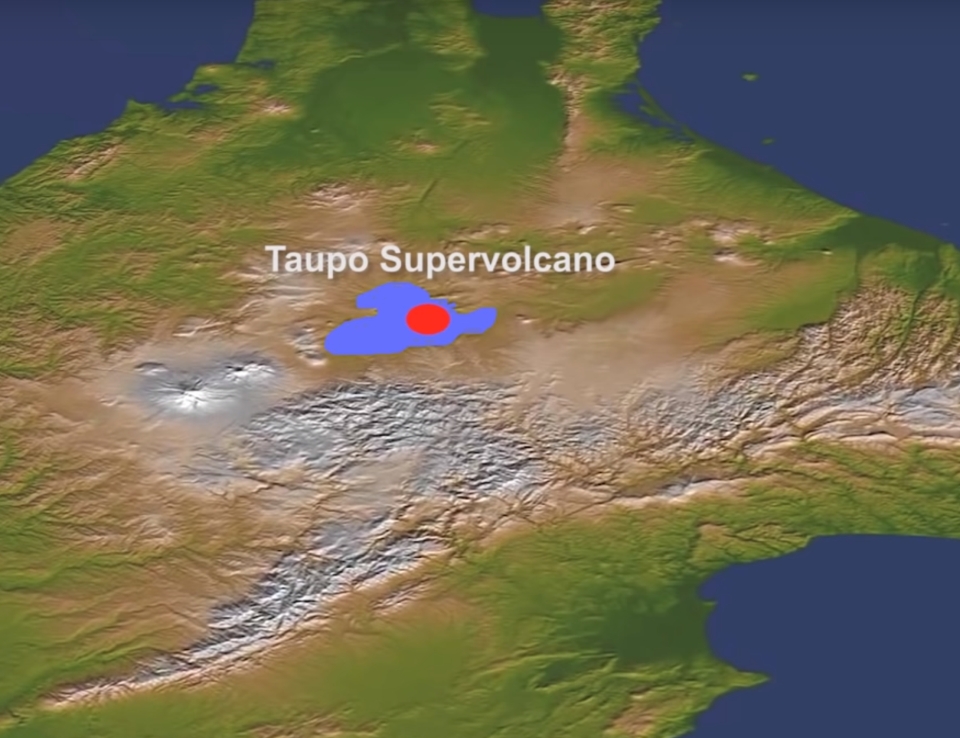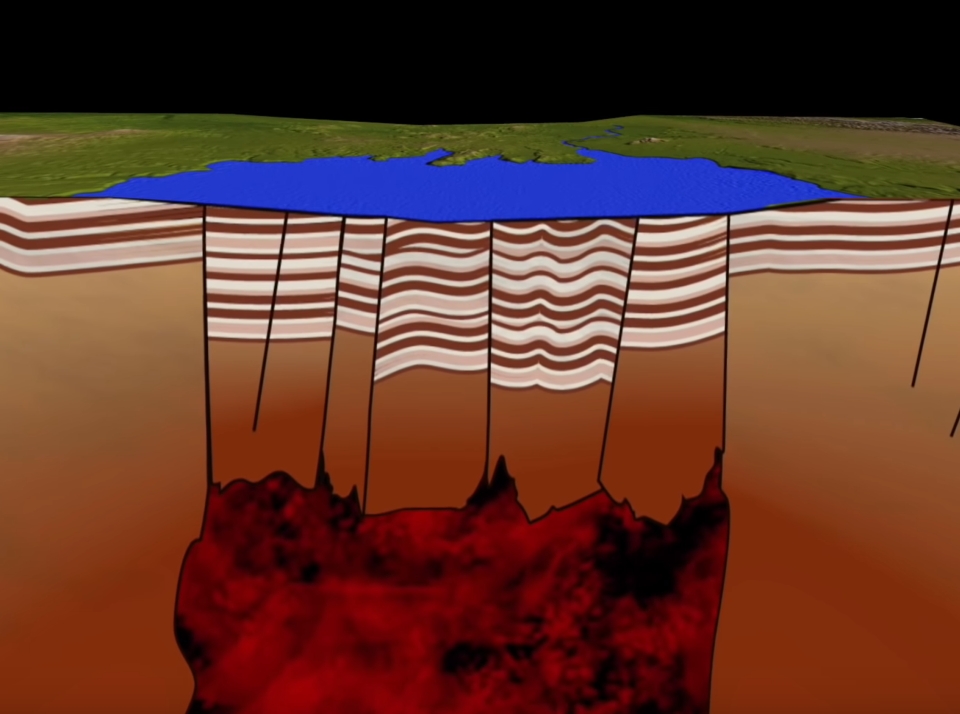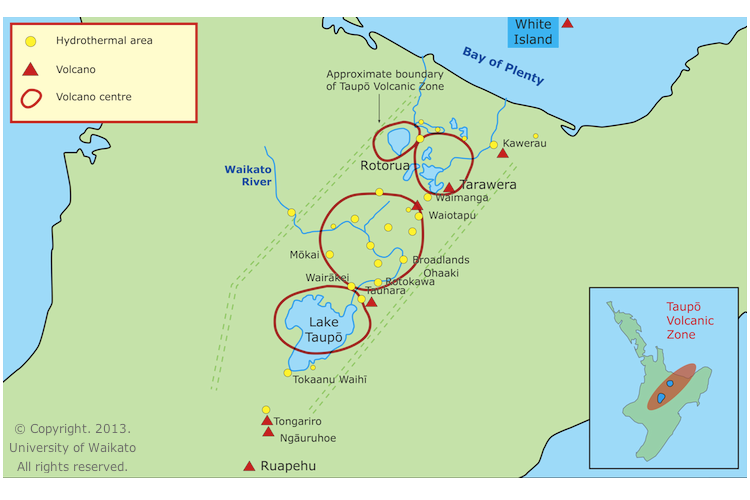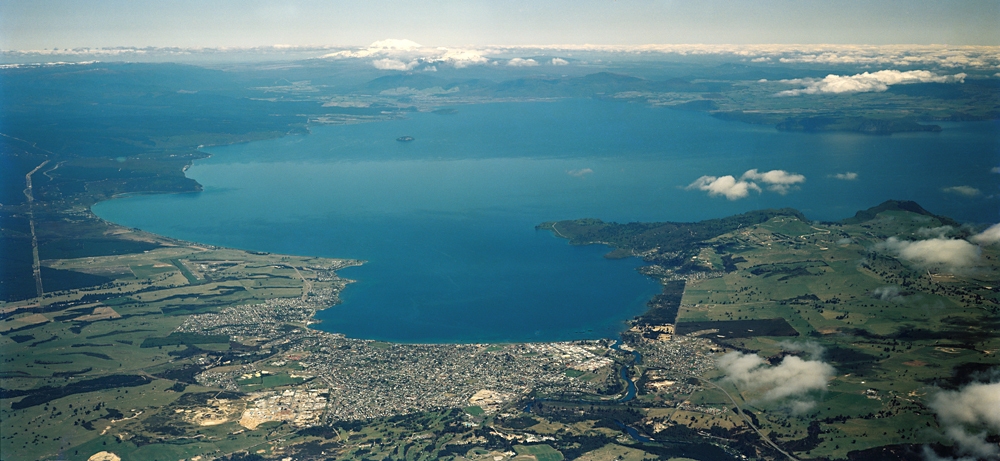According to local traditions tohunga Ngātoroirangi and rangatira Tia were both part of the Te Arawa waka fleet. They arrived at Lake Taupō at different times. Tia arrived first and he noticed that the cliff face resembled the rain cloak he was wearing. Tia named the cliffs Taupō-nui-a-Tia. Later on, the name was given to the lake.
In another version, Ngātoroirangi arrives to the area, and then asecends Tauhara mountain. While he is there he notices to the south, a mountain, Tongariro. On his way to the mountain he stops at a place called Hāmaria where he tells his followers, 'Let's rest and settle here for the night'. This gives rise to the name Taupō.
During this field trip you will follow the journey of Tohunga Ngātoroirangi. Ngātoroirangi and his sisters Te Hoata and Te Pupu were responsible for bringing fire to New Zealand from the ancestral homeland, Hawaiki. During his travels Ngātoroirangi encountered extremely cold weather. He called out to his sisters, who came to him from Hawaiki in the form of fire under the earth, appearing above the ground at intervals and creating the geysers, hot pools and volcanoes between Whakaari, White Island and Tongariro.
You can find out more about Ngātoroirangi in this interactive.
Taupō is a ‘supervolcano’ and one of the most frequently active rhyolite calderas in the world. The huge caldera (collapsed crater) has been partly filled by Lake Taupō, the largest lake in New Zealand. The caldera was created when the ground surface collapsed downwards due to the emptying of the magma chamber below.
The present magma chamber is between 6 and 8 km below the lake. Although Taupō Volcano has much more violent eruptions than cone volcanoes, they are much less frequent. It began erupting about 300,000 years ago and the present-day caldera was created by an eruption 27,000 years ago called the Oruanui Eruption.
Between this and the last ‘Taupo Eruption’ 1800 years ago, there have been at least 26 much smaller eruptions. These eruptions formed lava domes and spread pumice and ash over nearby areas.
Cause
The Taupō supervolcano system was created by subduction of the Pacific Plate below the Australian Plate. The movement of plates stretches the Earth’s crust. This stretching has led to a thinning of the crust in the entire Taupō Volcanic Zone. This allows magma to rise close to the surface causing volcanic activity.
The last major Taupō eruption is the most violent eruption known in the world in the last 5000 years. The eruption plume reached 50 km into the air, all of New Zealand received at least 1cm of ash and areas near the lake were covered in more than 100 m of pyroclastic flow. The flow spread up to 90 km from the vent and flowed over all local features except Ruapehu.
It is possible that ash from this eruption was the cause of red sunsets recorded by the Romans and Chinese.
Other Volcanic Hazards include:
- Strong earthquakes causing ground deformation, which will precede a big eruption.
- Lahars of loose pumice and ash deposits flowing down rivers after eruptions.
- Flooding. Deposits from a previous Taupō eruption blocked the lake outlet, raising the lake 34m above its modern level. When this blockage failed, a catastrophic flood was released down the Waikato River and it changed course.
- Increased geothermal activity can be expected, with steam explosions.
Ready for a quiz? Try the "Taupō Supervolcano" activity.







